Numismatic Articles
Van Arsdell 2014e (Info)
Modern Celtic Fakes 5 – Haslemere vs. the legendary forgers
By Robert Van Arsdell
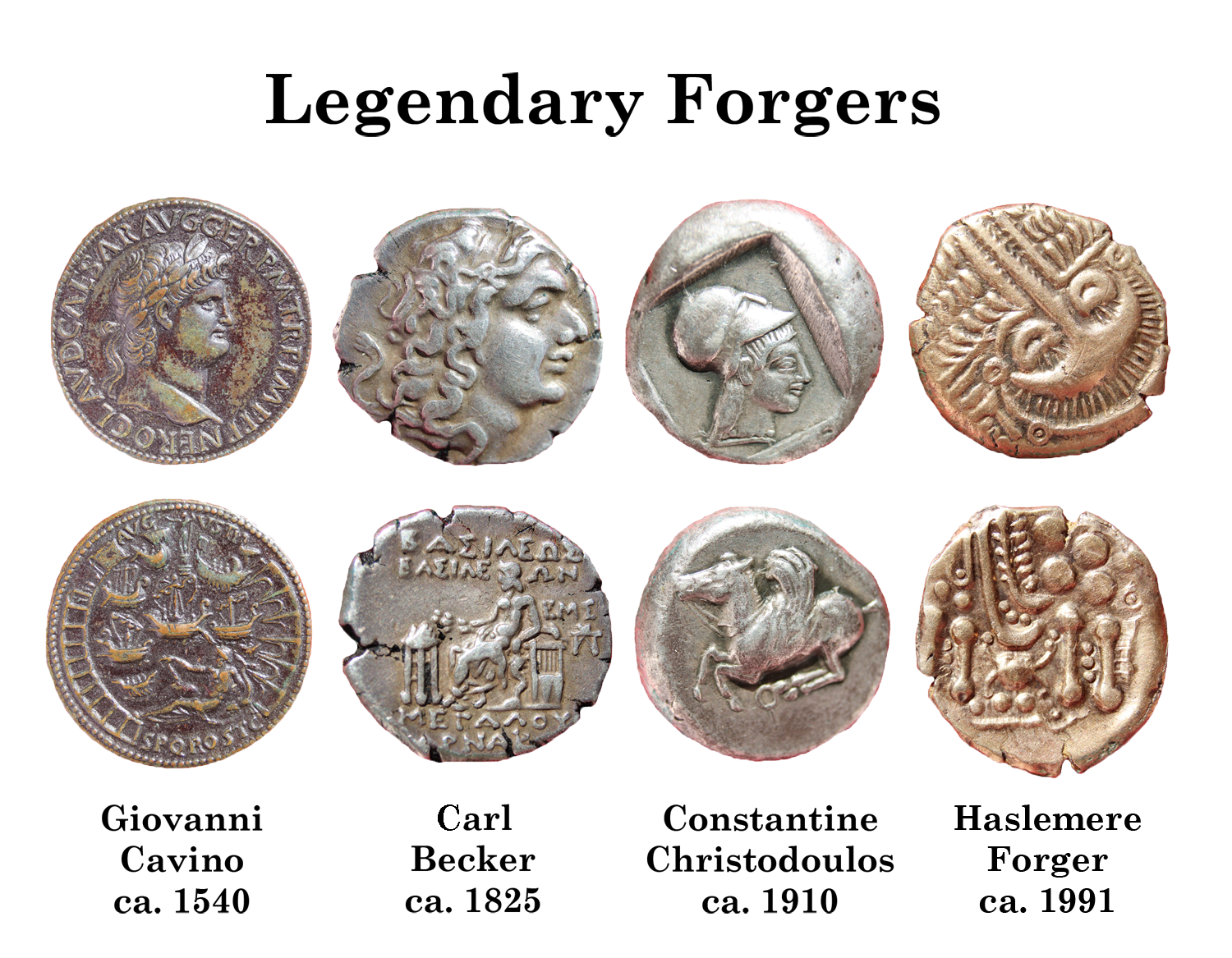
NB: coins not to scale (info) and dates are approximate.
Three legendary forgers, Giovanni Cavino, Carl Becker and Constantine Christodoulos, are renowned for producing extremely deceptive fakes. Their coins occasionally appear on the market undetected, showing they can still fool the experts. The lives and careers of these forgers have already been published (info). This article compares their work to that of a troublesome forger of Ancient British coins.
The Haslemere Forger began faking Celtic coins around June 1960 and never stopped (info). It’s possible he trained apprentices in the craft who carry on his work today – though this is mere speculation. In previous articles, I have shown how he improved his work in response to criticisms (info).
By 1991, he was producing some superb forgeries, ones that fooled almost everyone at the time. By comparing his 1991 Cheriton stater to the work of the legendary forgers of the past, we can appreciate how good (and how dangerous) his fakes are.
The Cheriton fakes have been described in detail in the last article in this series (2014d – see article), so readers may prefer to read that article first.
Constantine Christodoulos
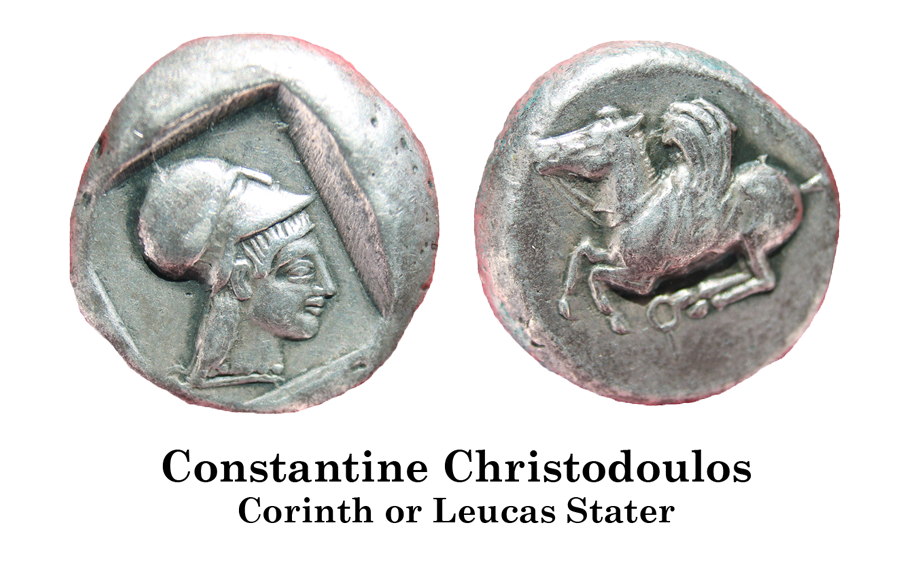
Christodoulos struck fakes from 1900 to 1914 (info). This stater is struck from obverse die 332 in Svoronos. It is possible the die had been modified between the time this coin and the Svoronos plate coin were struck. However, the same die defects (two dots on the upper right) appear on both coins. The reverse die was not recorded by Svoronos and is reproduced here for the first time.
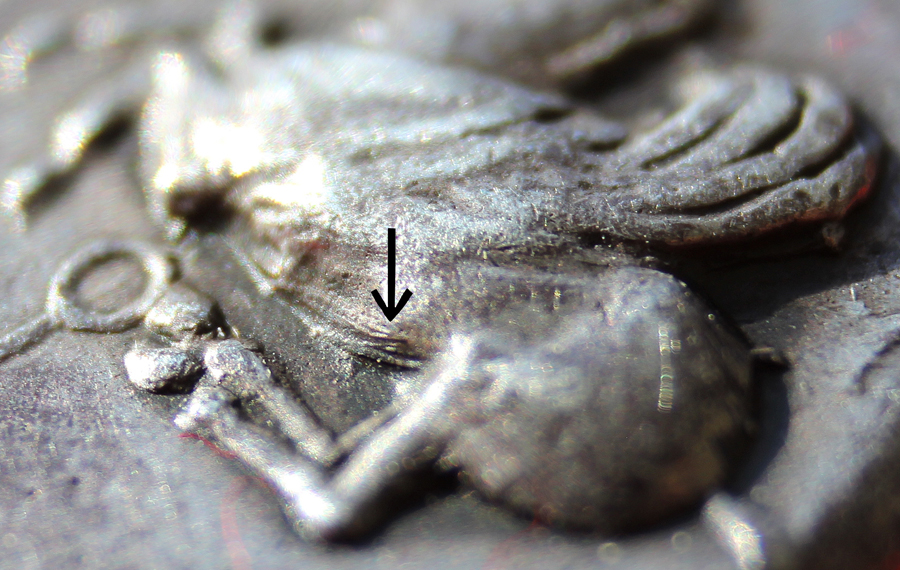
Crude gouges appear on the underside of the Pegasus on the reverse (arrow). These reveal the same die cutting error the Haslemere Forger was to make years later. Christodoulos has cut the curve of Pegasus’ belly with a series of crude strokes. He then failed to dress the dies to clean up the mess (info).
The best of the Haslemere Forger’s work is better than this coin. The Haslemere Forger was certainly the equal of Christodoulos, and possibly was an even better craftsman.
Carl Becker
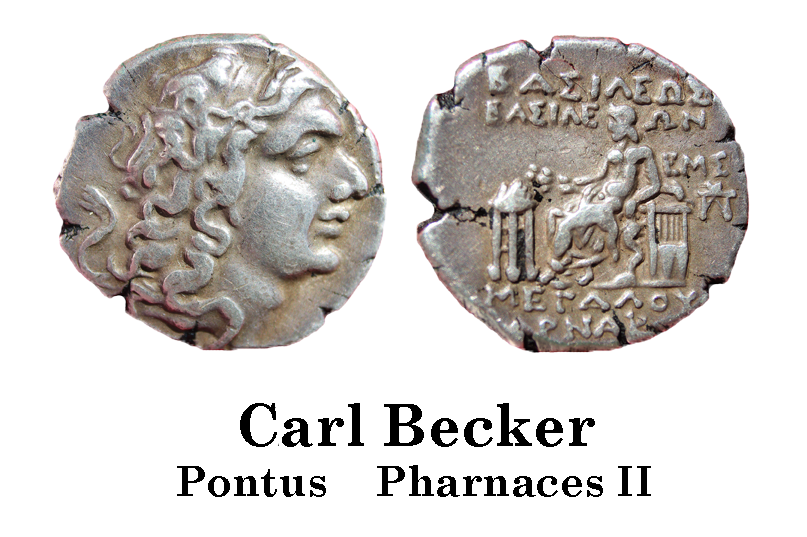
Becker produced fakes during the 1820s (info). This coin is struck from the dies for Hill 75 (Pinder 78). The original ancient type was a gold stater, though this fake was struck in silver. Becker offered complete sets of his coins in silver (info), so the appearance of a silver example is expected. This coin represents a “wrong-metal forgery” or perhaps just a “fantasy”.
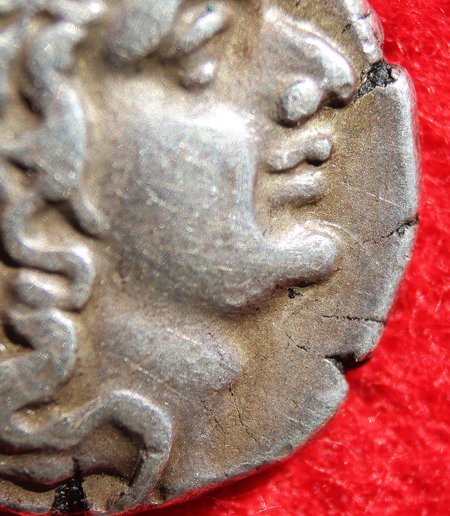
The obverse shows Becker’s excellent die cutting. There are no rough gouges or striations on the portrait. The dies have been cut and dressed expertly.
The Haslemere Forger had not achieved Becker’s level of expertise by 1991; his Cheriton dies show excessive die-dressing marks and even overlapping cuts that were never corrected.
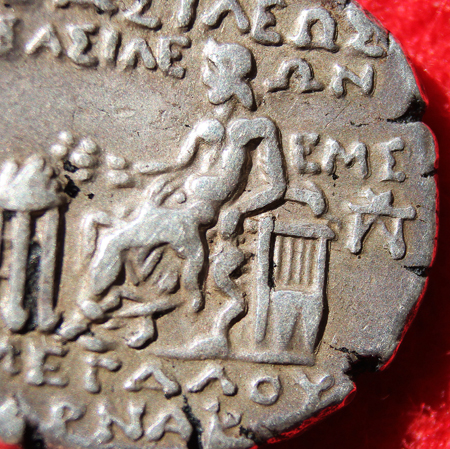
The die cutting on the reverse shows Becker’s expertise as well. He reproduced circulation wear convincingly, something the Haslemere Forger never accomplished. The Haslemere Forger made no attempt to simulate circulation wear.
Becker's study Sets
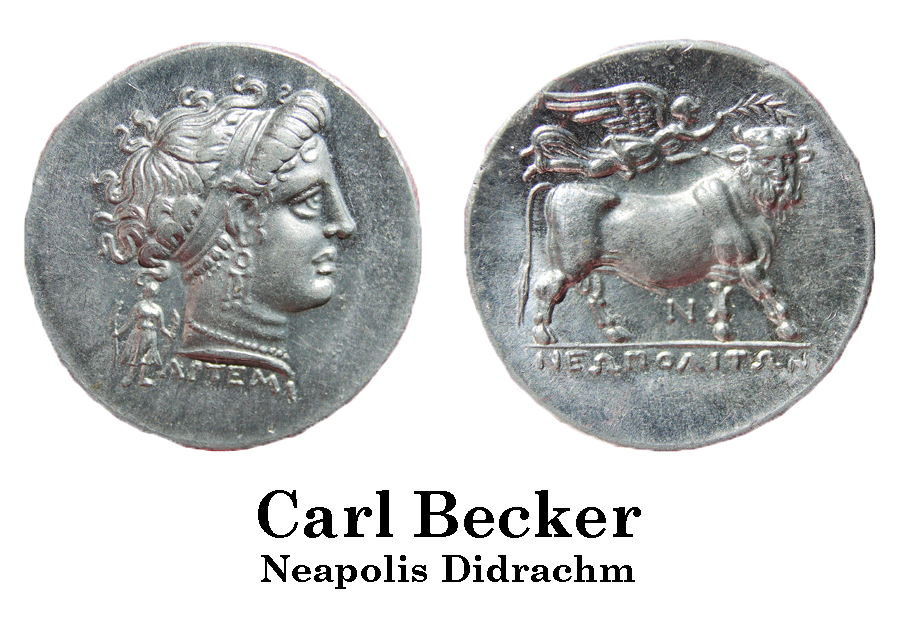
Becker’s heirs (after his death in 1830) offered sets of coins struck in a soft tin/lead alloy (info). This is a coin from one of the “study sets”, Hill 2 (Pinder 2). The soft-metal strikes are particularly useful because they give more information about Becker’s die cutting skills.
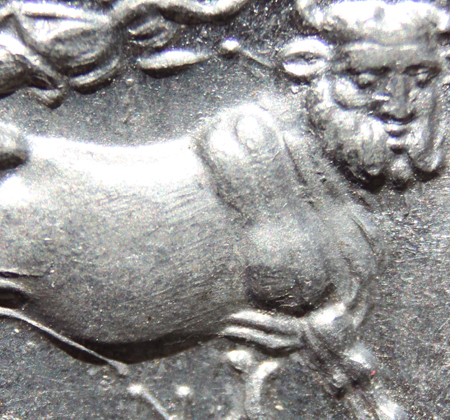
On the reverse, the man-headed bull shows a series of fine striations on the side and belly of the beast. The soft metal has faithfully recorded Becker’s die-dressing work to smooth the body of the animal. These marks may not have been stuck up when a silver flan was used. They certainly would have been obliterated during Becker’s antiquing procedures.
The Haslemere Forger, when he took the trouble to dress his dies, usually produced some visible marks. He could also over-dress the dies such that the image elements appear unnatural and bloated.
Giovanni Cavino
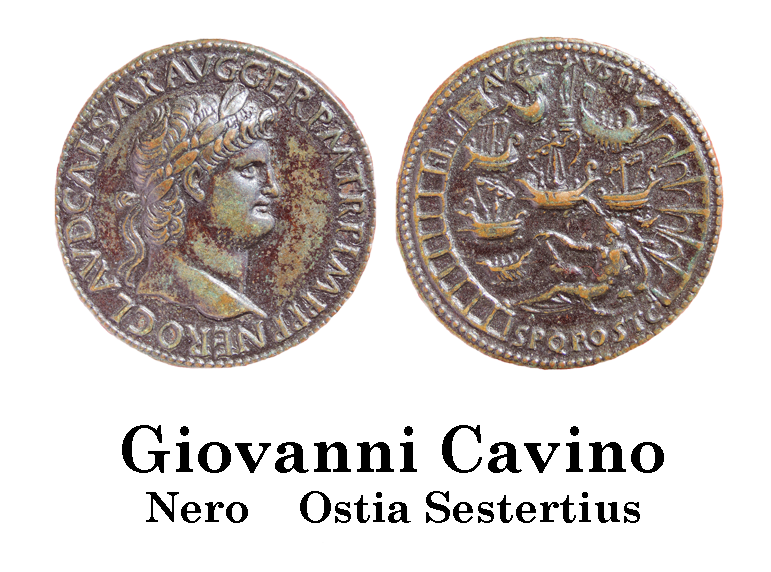
Giovanni Cavino lived from 1500 to 1570 and was active in the mid 1500s (info). He is one of the forgers identified by Vico in 1555 (info).
Not only was Cavino an accomplished die cutter, but he also was expert at antiquing and patinating his coins. This Ostia sestertius shows convincing wear and has a beautiful brown and green patina.
Cavino cut several pairs of dies for this type. He also modified his dies over time, so different varieties are known. He did not attempt to duplicate the correct metal for a sestertius (brass), nor did he exactly duplicate the style of the lettering on the originals. His flans are usually too round and thin compared to genuine sestertii.
Cavino’s work is distinctive for these reasons and authentication has rested on considerations other than die cutting. It should be kept in mind that Cavino’s “mistakes” may not have mattered to buyers in the 16th century.
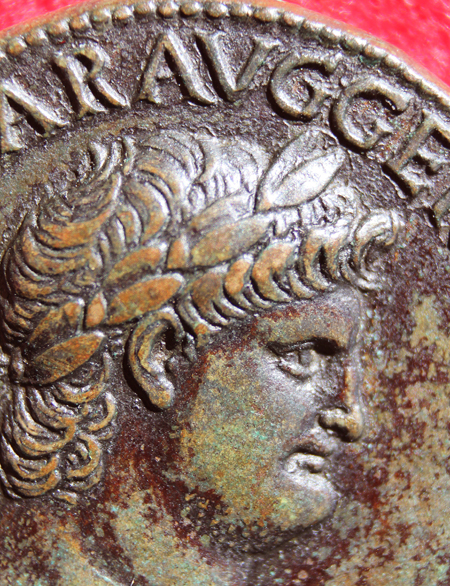 The image on the obverse shows Cavino’s ability to cut smooth curves and lines without any evidence of multiple stokes. Note also that there is no evidence of die dressing marks – the surfaces are perfectly smooth.
The image on the obverse shows Cavino’s ability to cut smooth curves and lines without any evidence of multiple stokes. Note also that there is no evidence of die dressing marks – the surfaces are perfectly smooth.
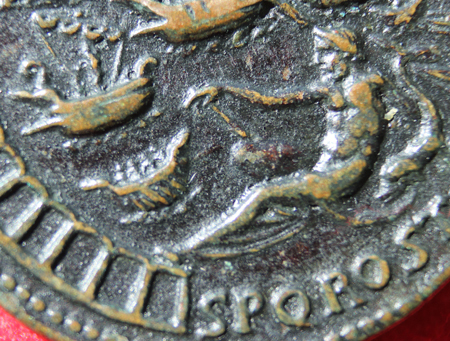
The reverse shows Cavino’s attention to detail. Note the small figures in the boat and the musculature on the reclining figure.
The Haslemere Forger, by 1991, had not attained this level of skill.
Summary
The Haslemere Forger had improved his work greatly from 1960 to 1991. At the end of that period, he was capable of work rivaling that of Constantine Christodoulos. If he continued to improve his work after that time, he may very well have been capable of forgeries as good as Becker or Cavino.
The Haslemere Forger is certainly in the league of the legendary forgers. As such, he should be seen as a dangerous falsifier of the archaeological and numismatic records.
End
